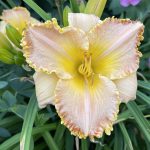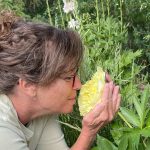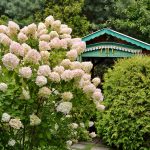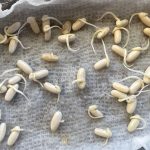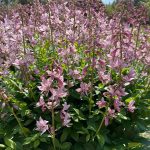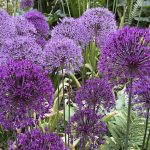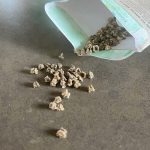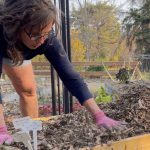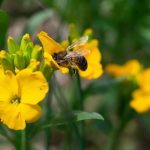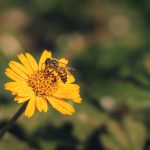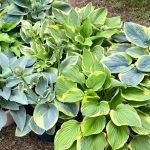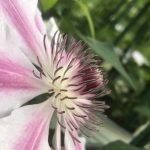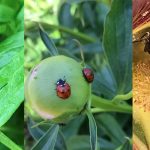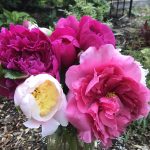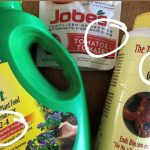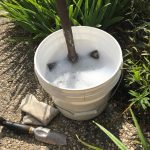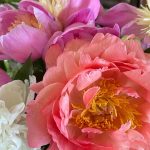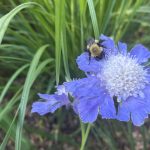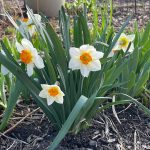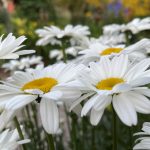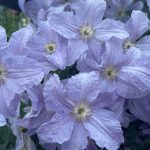Hollyhock rust infections happen worldwide, causing spotted, lacey foliage in varying degrees of breakdown. If your garden is facing a rust infection, there are several things you can try to help manage the hollyhock rust infection before needing to dig them up.
Let’s take some time to focus on Hollyhock Rust Disease.
This blog will cover:
- How Hollyhock Rust Infections Develop and Spread
- Signs & Symptoms of a Hollyhock Rust Infection
- Strategies to Manage Rust Infections on Hollyhocks
A Little Background on Hollyhocks
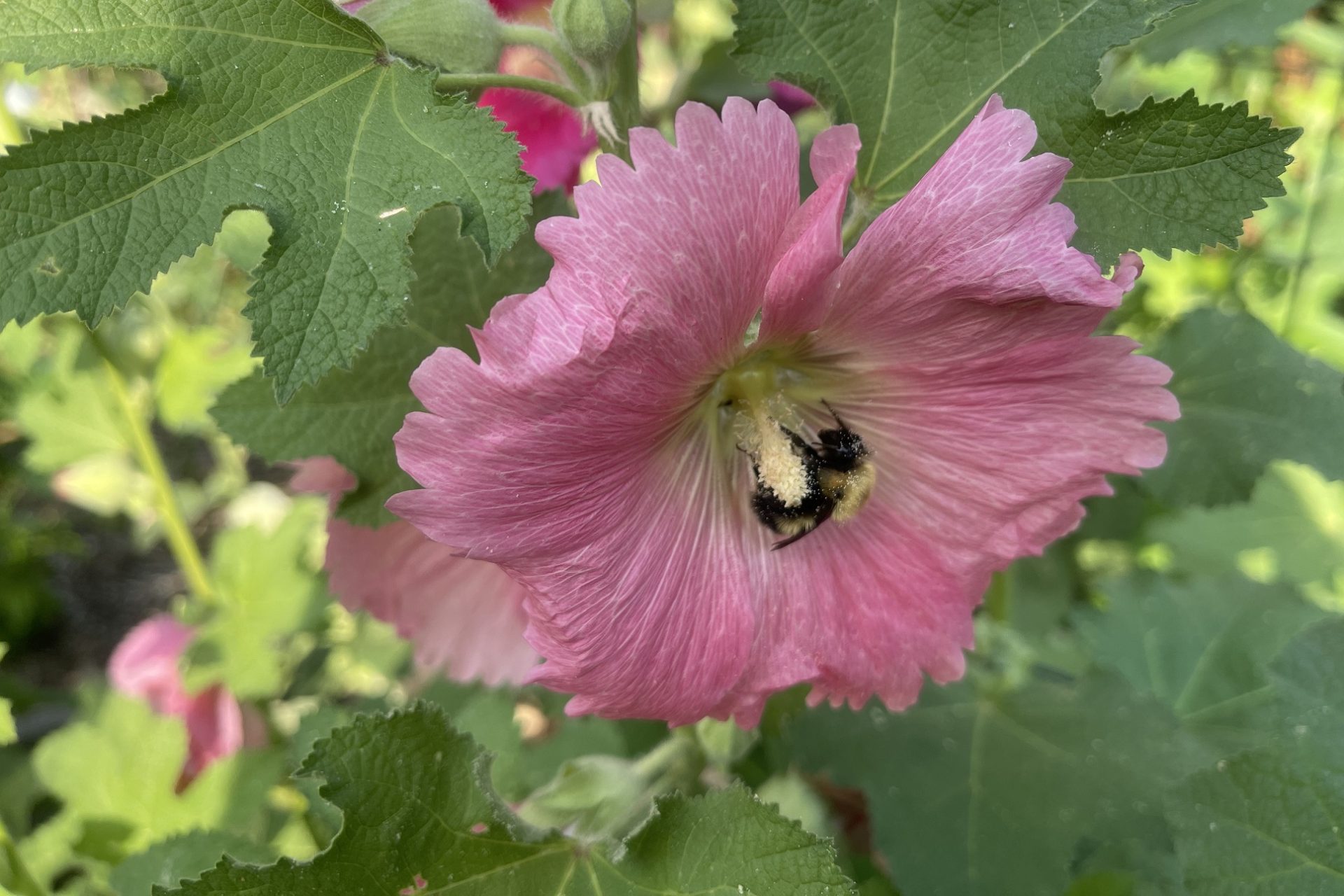
‘Alcea’ is the Latin name for Hollyhocks, which means ‘species of plant with gelatin-like sap that has hairy stems and leaves’.
Hollyhocks are native to parts of Asia and Europe and now they are part of the landscape all over the globe in horticultural zones 3-9, growing on every continent except the Arctic and Antarctica.
Related: What are Plant Hardiness Zones and How Do They Work?
Hollyhocks are nostalgic, stately, short-lived herbaceous garden perennials. Herbaceous perennials die back in the fall and grow fresh from their roots each spring.
Hollyhocks are the quintessential cottage garden plant with double or single trumpet-shaped flowers that start growing from bottom of robust stalks to their tips. Depending on the variety and the environmental conditions, Hollyhocks grow in height from 1 m (3′) to as tall as 4.5 m (15′).
Gardeners often ask if Hollyhocks are perennial.
Well, Hollyhocks are an interesting lot.
Hollyhocks can be annuals, biennials, or short-lived perennials, depending on the variety and the location they are grown.
Related: How to Grow Healthy, Happy Hollyhocks
Hollyhocks are a great addition to pollinator gardens. They provide pollen during mid to late summer. Bees are particularly attracted to their easy-to-land-on, open, trumpet-shaped flowers.
Related: 5+ Ways to Create a Thriving and Pollinator-Safe Garden, The Best Annual & Perennial Flowers for Your Zone 3/4 Pollinator Garden
What is a Hollyhock Rust Infection?
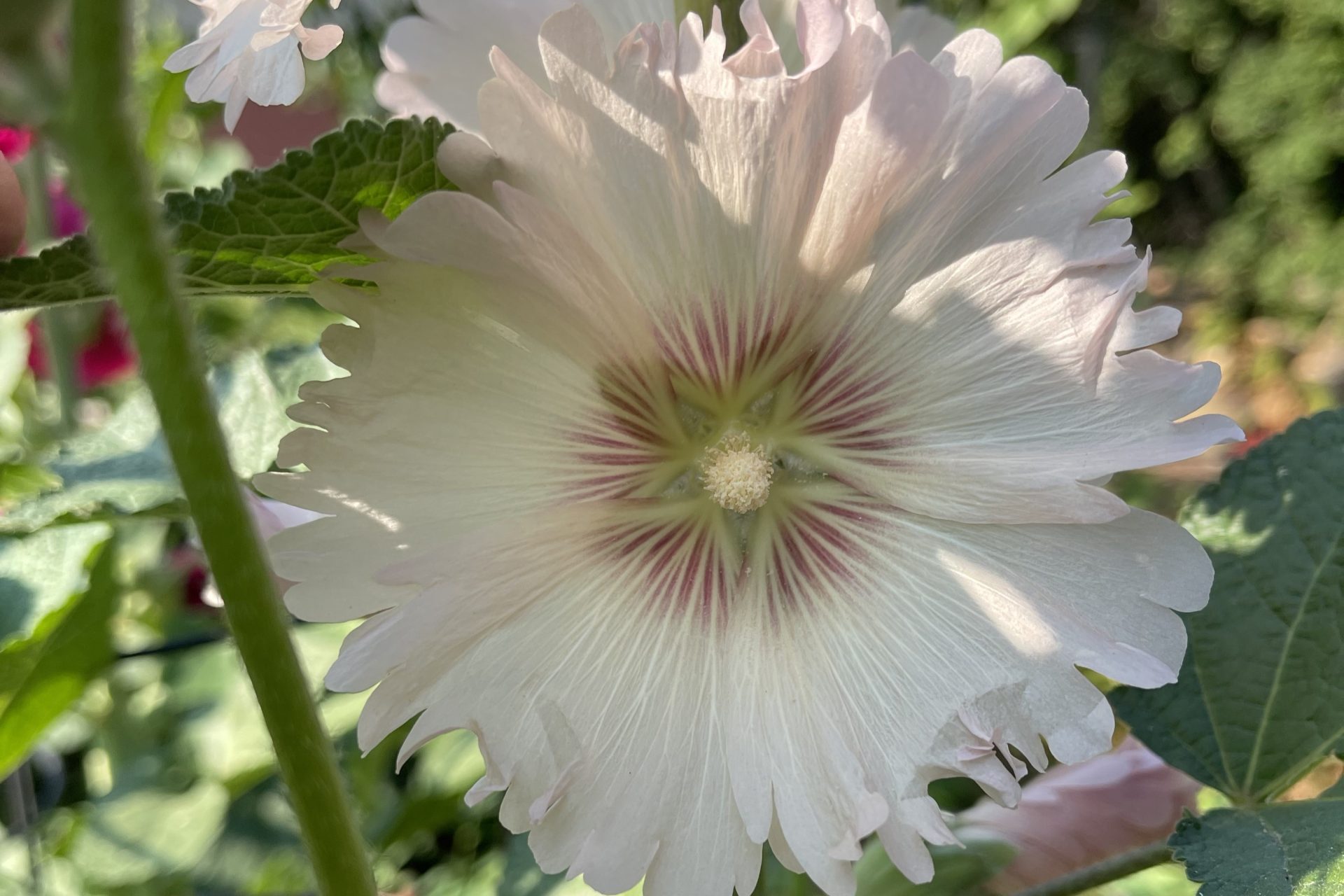
‘Rust’ is a horticultural term used to describe plant fungal infections.
The word ‘rust’ is used because it aptly describes the resemblance of orange-looking spots on plant leaves to rust corrosion on metal.
Rust infections are found on all types of garden plants like annuals, perennials, roses, trees, and shrubs, but every kind of fungal infection is plant specific. For example, Hollyhock Rust Disease will not infect a rose, nor will rose rust infect a Hollyhock or other type of perennial.
Hollyhock Rust infections are the most widespread disease affecting Hollyhocks and are an issue among Hollyhocks globally.
The rust infection that affects Hollyhocks is known as ‘Puccinia malvacearum’. It not only affects Alcea, but it also infects annual Malvas and Lavatera.
How Hollyhock Rust Infections Develop and Spread
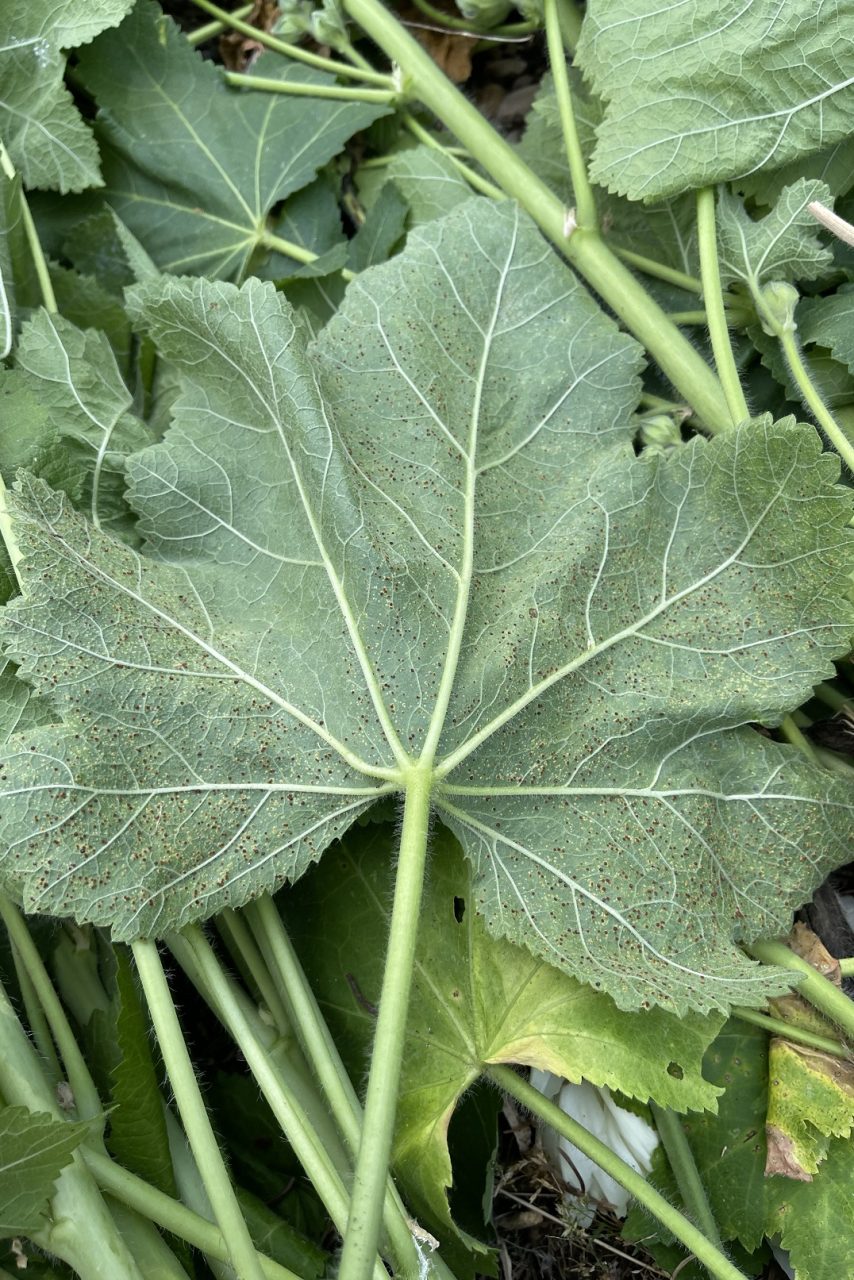
Hollyhock Rust can cause extensive structural leaf damage, but the good news is that it is mostly a cosmetic problem and rarely causes plant death.
Hollyhock rust spores overwinter on infected Hollyhock stem and leaf debris.
When the moist spring weather gets balmy, the spores begin to develop and then get caught up in wind currents or water droplets to hop on the nearest, lowest fresh Hollyhock leaf.
As with most infections, initial signs of Hollyhock rust disease are small and unnoticeable. However, once it reaches a particular stage, it spreads rapidly up the stalks and to neighbouring plants.
The literature is undecided whether Hollyhock seeds carry rust spores, but the infection does spread to the calyces (the green part surrounding the seeds).
Signs and Symptoms of Hollyhock Rust Disease

Hollyhock rust infections affect all the green parts of the plant but not the flowers.
The first signs of Hollyhock rust disease are little spots growing on the dorsal side (underside) of the lower leaves that eventually work their way to the top side of the leaves.
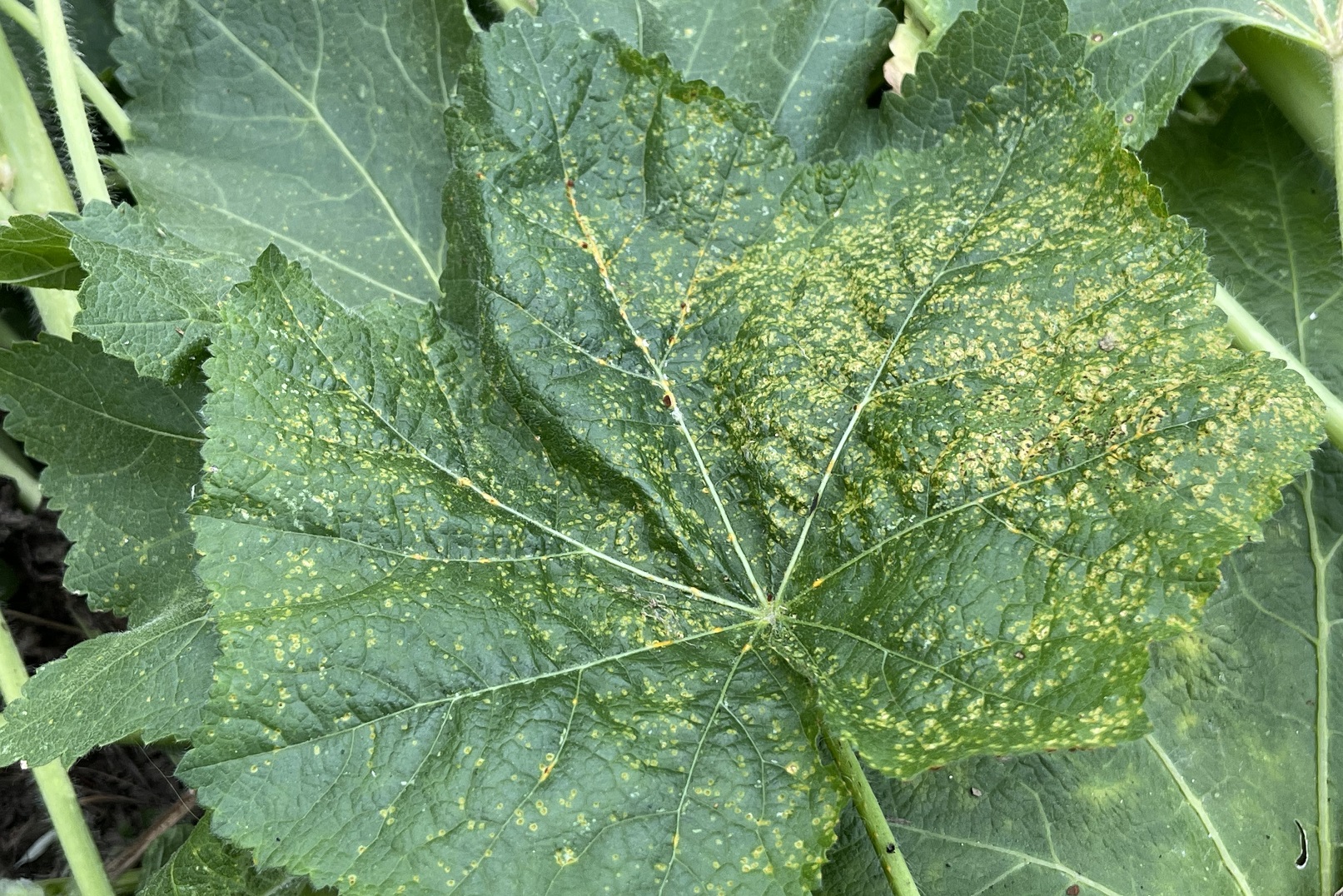
These spots start tiny and eventually grow to the size of a small nail head.
The rust spots can be brown, black, or yellow; and can be surrounded by a yellow halo. These spots are the initial pustules of the infection.
As the pustules mature, they become raised and lumpy and produce spores that spread to other Hollyhock plants nearby.
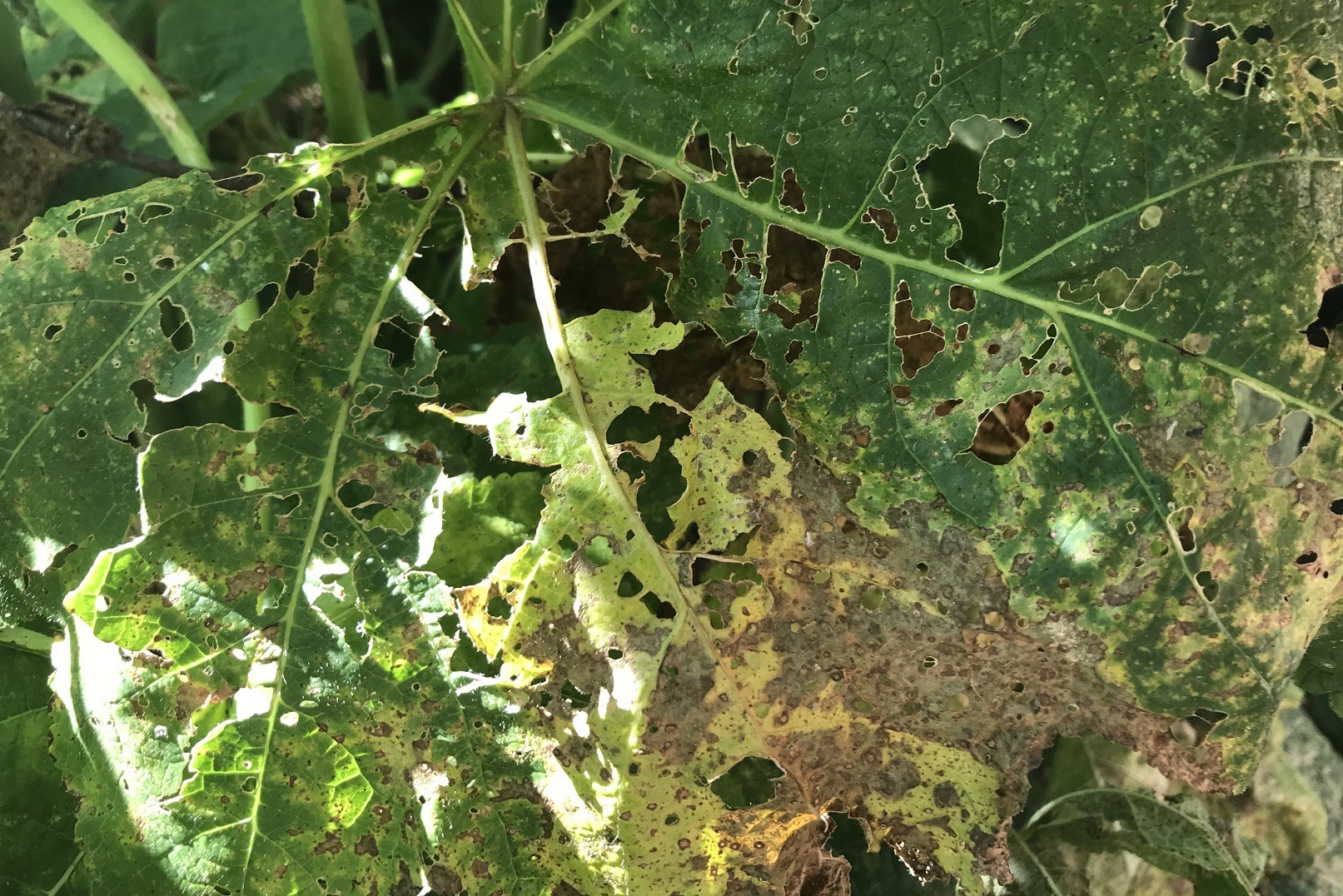
Hollyhocks will begin to look bedraggled as the infection progresses. Leaves begin to yellow, dry out, and appear lacey as holes develop while cells die from the disease.
Rust lesions on the stems indicate that the infection is quite advanced.
Ways to Manage Hollyhock Rust Infections
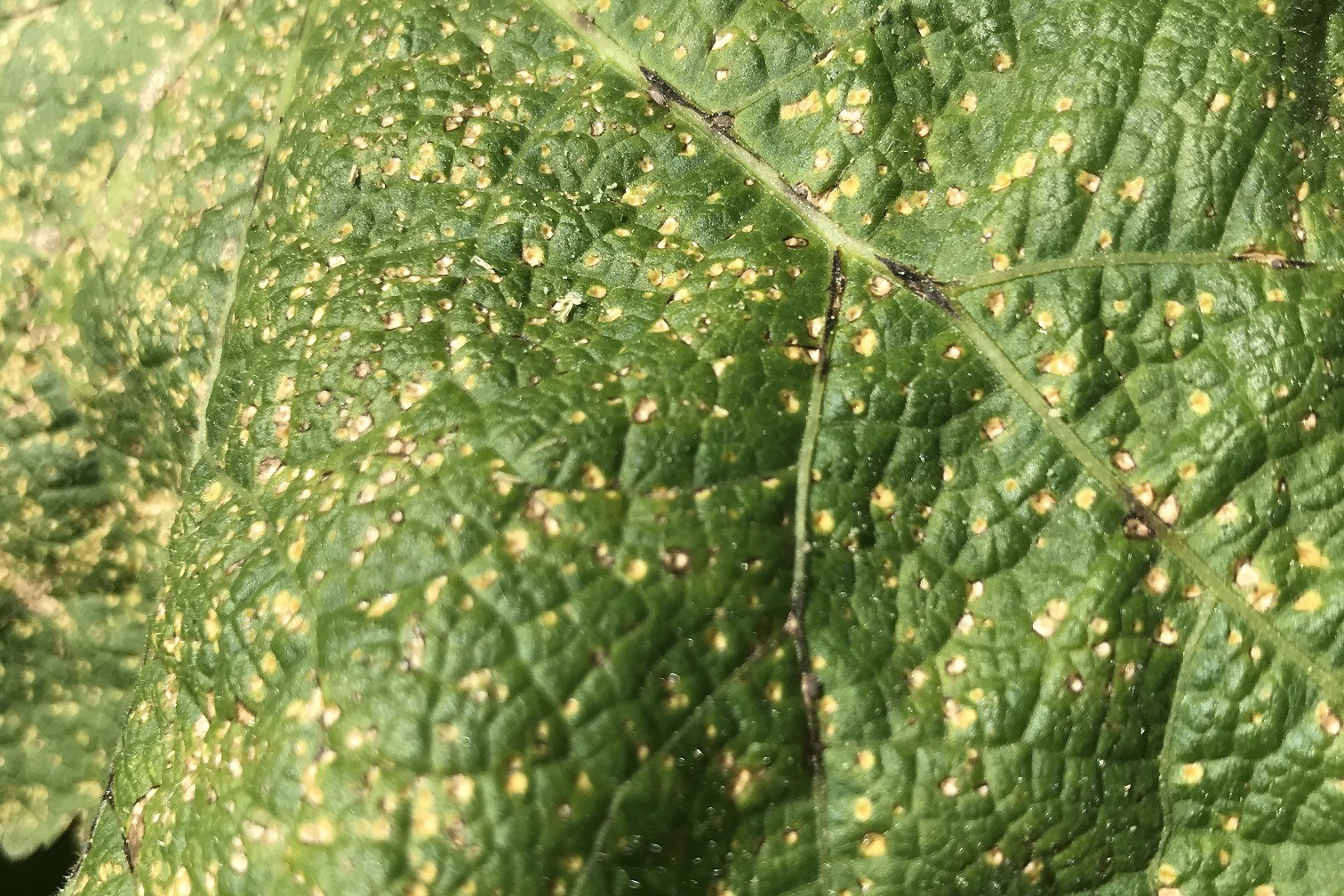
Hollyhock rust infections are challenging to cure, and again, Hollyhocks rarely die from this malady.
The objectives of Hollyhock rust infection management are to slow and prevent the disease cycle through sanitation and growing more resistant varieties.
Let’s look at 9 strategies to reduce the incidence of Hollyhock rust infections:
1. Grow Hollyhock (Alcea) Varieties that are Resistant to Rust
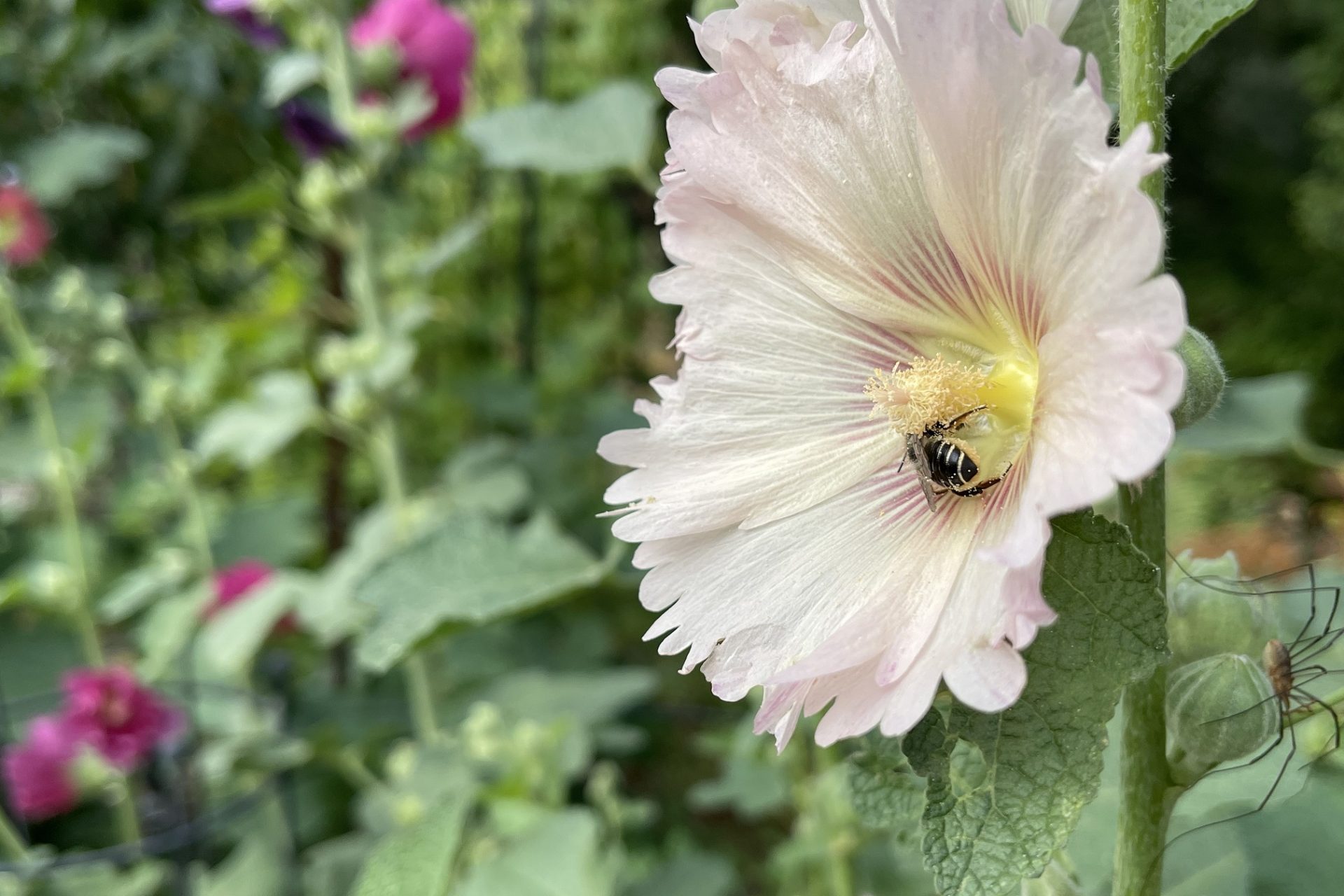
One way to reduce the incidence of Hollyhock rust disease is to grow cultivars resistant to rust, but none are rust-proof.
Look for these varieties when shopping for plants or seeds:
- Hollyhock (Alcea) Spotlight Series (Blacknight, Mars Magic, Polarstar, Radiant Rose, Sunshine)
- Alcea Ficifolia ‘Las Vegas’
- Alcea Happy Lights Mix
2. Purchase Disease Free Hollyhock Plants
Start with a clean slate and only introduce uninfected plants into your perennial garden.
Check Hollyhock plants thoroughly, both the top and bottom of leaves, for any spots before purchasing.
3. Maintain a Dry Hollyhock Growing Environment
Since fungus thrives in wet conditions, reducing moisture in the Hollyhock patch is helpful for containing disease spread.
It’s understood that not much can be done if it’s rainy, but when and how they are watered can reduce ambient moisture that facilitates the spreading of spores.
Avoid using a water sprinkler that can actively spread the spores, and when you do water, water at or near the base of the plant to keep the leaves dry to reduce available water to the growing pustules.
Watering early in the morning will give the Hollyhocks time to dry out during the day to reduce the chance of fungal growth.
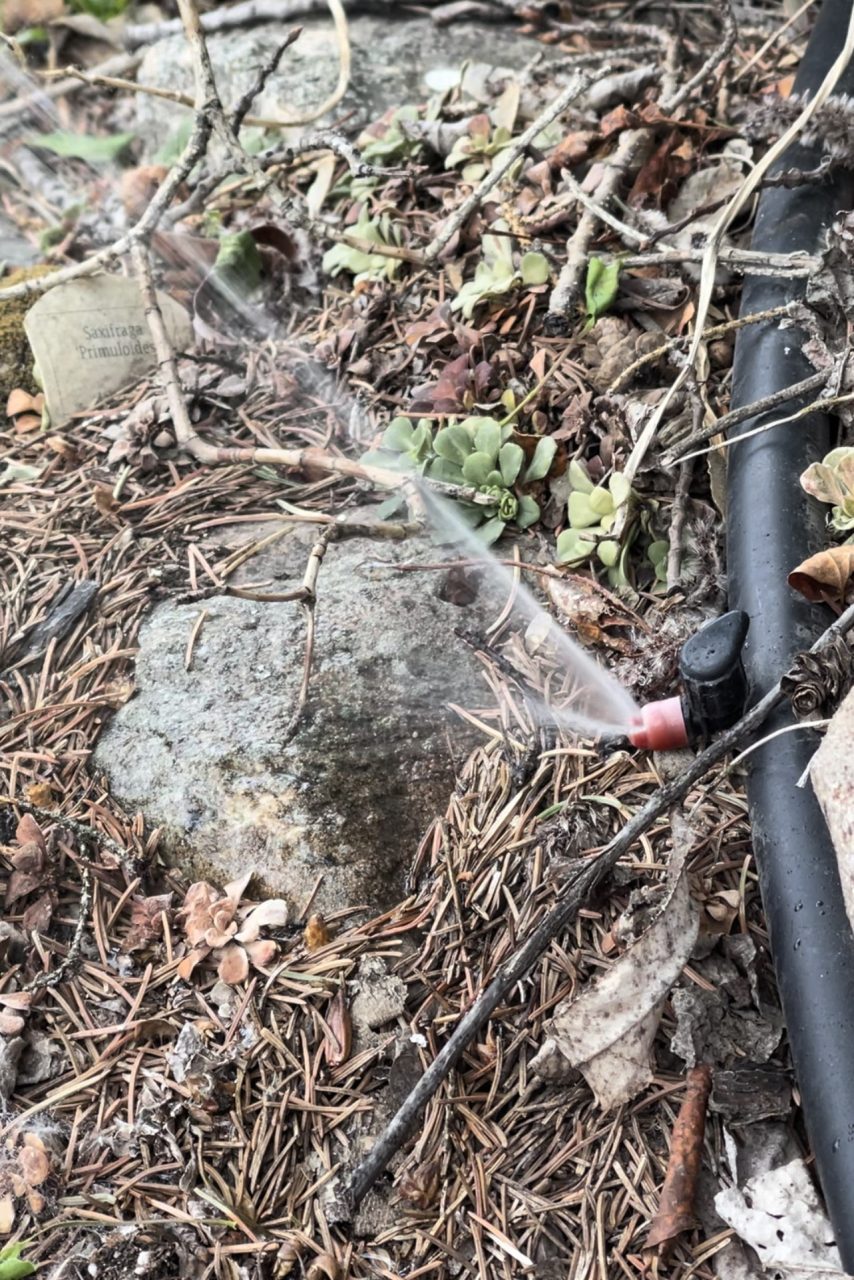
4. Promote Air Movement in the Hollyhock Patch
Good air movement promotes a drier growing environment. Plant Hollyhocks 60-100 cm (2-3′) feet apart to give ample space to grow without becoming overcrowded.
Thin out Hollyhock stalks and leaves to reduce air stagnation and improve air circulation. Hollyhock stems can be thick and pokey, so cut them at the base when thinning them out.
5. Monitor Hollyhocks Regularly for Rust Pustules
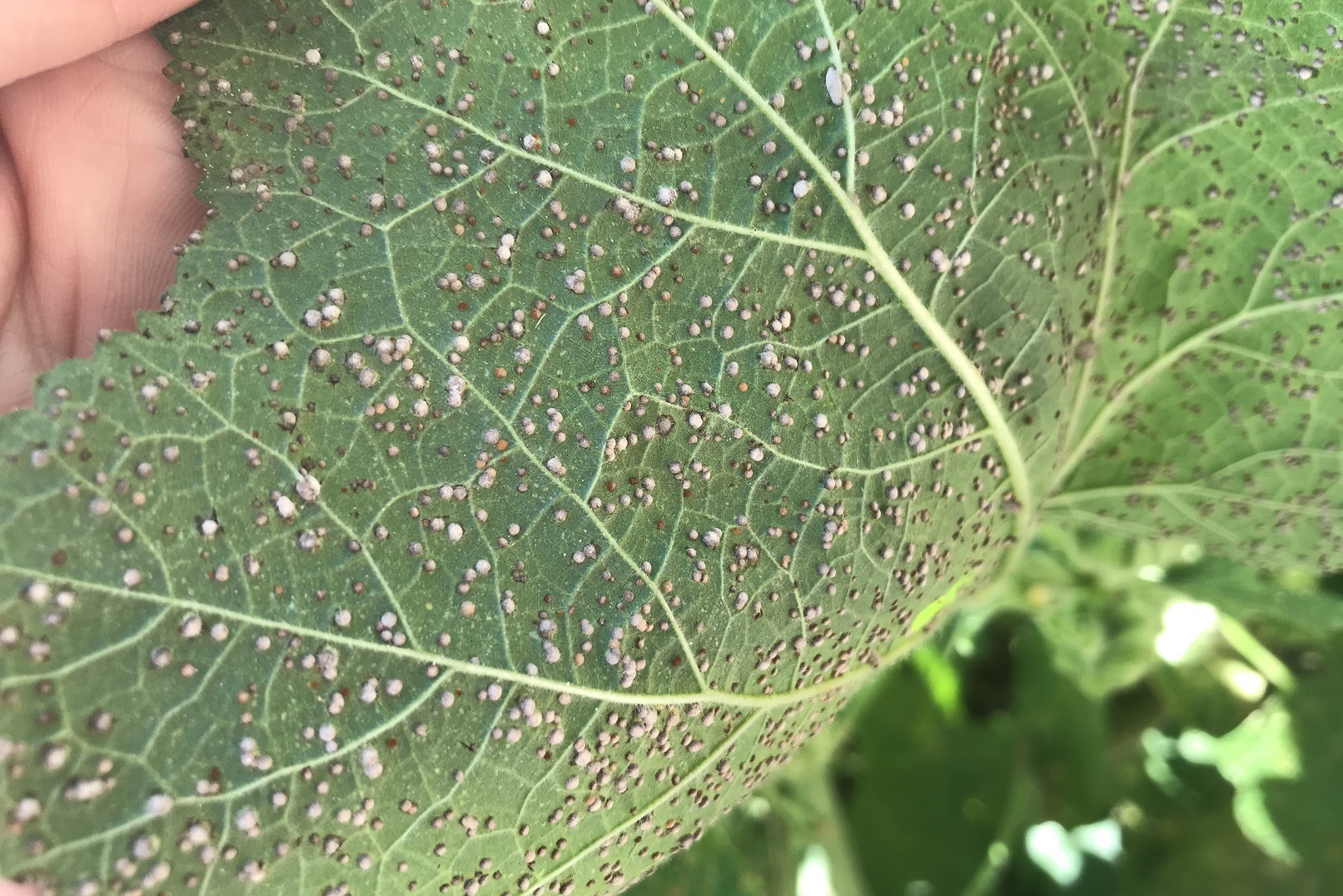
Inspect Hollyhocks regularly for any signs of fungus pustules. Hollyhock rust infections start on the lowest leaves of the plant, therefore, turn the leaves over and check the undersides of the lower leaves weekly.
6. Pinch off and Remove Affected Leaves Immediately
Remove leaves and cut out stems with rust spots to reduce the fungus spores’ incidence and spread.
Then clear away the contaminated leaves from your garden area by bagging them and sending them to the dump or burning them.
Don’t let infected leaves become mulch in the Hollyhock patch. Never compost infected plant material because it percolates and grows in the compost pile to spread back into the garden.
7. Avoid Using Seeds from Infected Hollyhock Plants
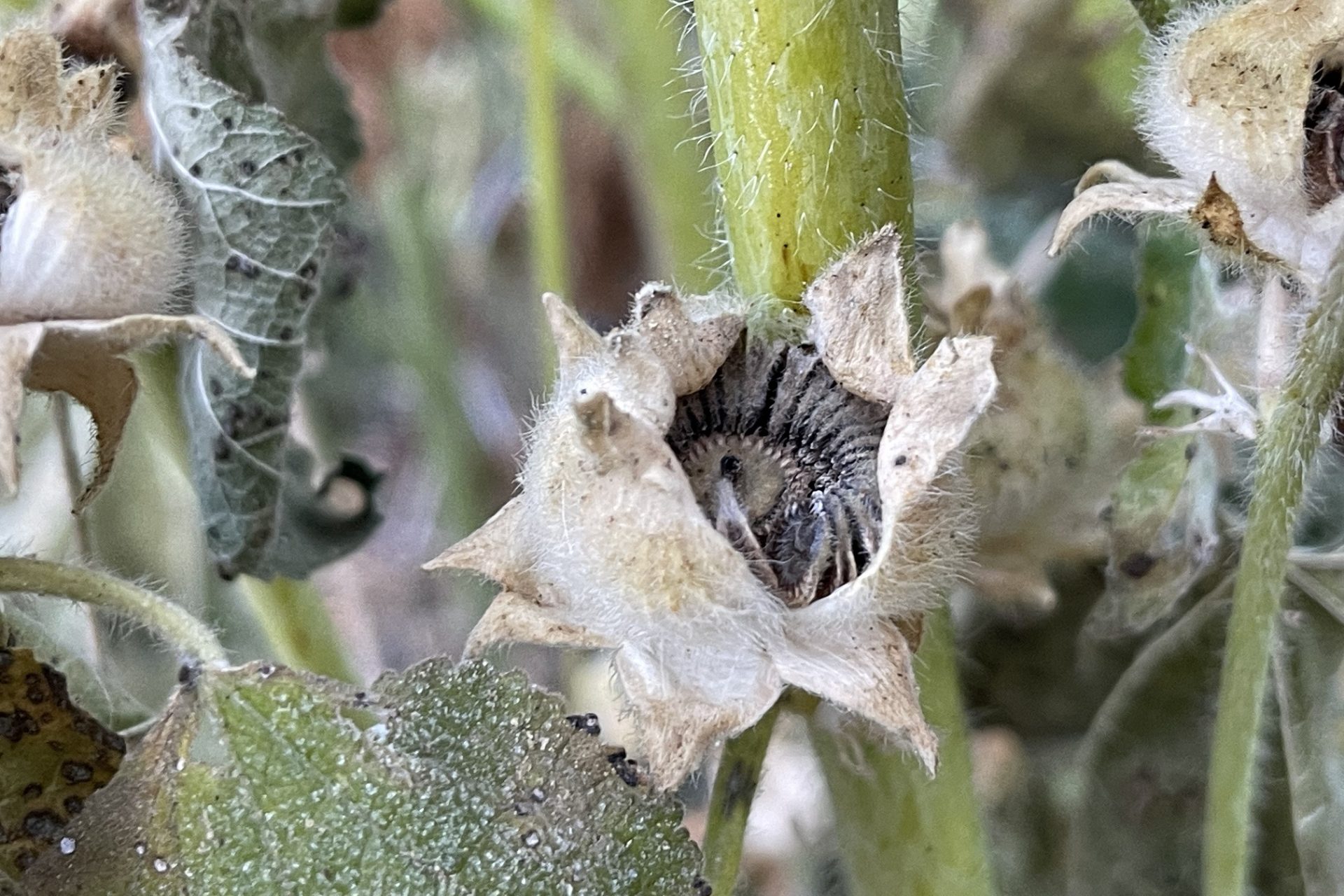
It is unknown whether seeds from infected Hollyhock plants spread rust as the research is inconclusive on whether seeds from infected Hollyhocks carry rust spores, but just to be safe, avoid using these seeds.
8. Fall Care of Rust-Infected Hollyhocks
If you have Hollyhocks infected with rust, cut the stalks down to the ground and remove them from the garden to reduce the number of rust spores.
Don’t compost this infected plant material as mentioned above; burn or bag it to avoid reinfection.
9. A Note About Fungicides for Hollyhock Rust Infections
Some sources recommend using fungicides in the fall or at first emergence in spring.
I’m not a fan of chemicals and suggest you use fungicides as a last resort because most sources agree that the best approach to Hollyhock rust infections is to reduce the incidence of the infection through the above 8 steps, as fungal infections are very challenging to cure.
Wrapping Up Hollyhock Rust Infections
Hollyhock Rust is a a part of Hollyhock life. However, with early and consistent care, the impact of this infection can be reduced. Hollyhocks are a beautiful and vibrant flower to bring to your yard, so don’t let a fear of hollyhock rust stop you from planting them. By following my tips on managing hollyhock rust infections, you can keep your garden bright and healthy all season long!
If you would like to explore more about the care and feeding of Hollyhocks, my blog, How to Grow Healthy, Happy Hollyhocks, has many handy tips for growing this beautiful perennial garden plant.
©Sharon Wallish Murphy ©Gardening with Sharon


